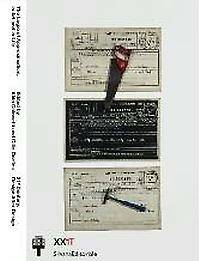
- Afhalen na 1 uur in een winkel met voorraad
- Gratis thuislevering in België vanaf € 30
- Ruim aanbod met 7 miljoen producten
- Afhalen na 1 uur in een winkel met voorraad
- Gratis thuislevering in België vanaf € 30
- Ruim aanbod met 7 miljoen producten
Zoeken
€ 22,00
+ 44 punten
Omschrijving
"We live in the midst of approximation, we might even say that, without approximation, our life would be impossible, and so would our art", wrote Gillo Dorfles on occasion of the De Divina Proportione conference held at Triennale in 1951, with the participation of - among others - Le Corbusier, Giedion, Nervi, Rogers, Zevi and young designers Gregotti and Canella.
What has changed since then about the theme Dorfles introduces - approximation - so central to the relation between design and final work? Production methods, new materials, advanced technologies have changed the way we design the world. Since the '50s, Dorfles' research has focused on the relationship between the aesthetic dimension and the empirical existence of things.
The exhibition designed by Blumerandfriends, is a journey inside approximation, with works by G. Basilico, M. Botta, J. Cage, G. Colin, L. Damiani, G. Devecchi, M. Duchamp, M. Ferrari, R. Filliou, E. Fiorucci, C. Gambardella, G. Iliprandi, P. Manzoni, G. Marchesi, A. Meda, A. Milani, U. Mulas, F. Origoni, R. Piano, A. Pomodoro, D. Santachiara, Studio Azzurro, B. Vautier. On show also 20 everyday objects that are apparently banal - perhaps approximate - but essential to our lives: from the simple ruler to the pencil, from Post-It notes to the broom and the sickle. The logic of approximation, especially today, is fundamental to the evolution of everyday objects as well as new artistic languages.
What has changed since then about the theme Dorfles introduces - approximation - so central to the relation between design and final work? Production methods, new materials, advanced technologies have changed the way we design the world. Since the '50s, Dorfles' research has focused on the relationship between the aesthetic dimension and the empirical existence of things.
The exhibition designed by Blumerandfriends, is a journey inside approximation, with works by G. Basilico, M. Botta, J. Cage, G. Colin, L. Damiani, G. Devecchi, M. Duchamp, M. Ferrari, R. Filliou, E. Fiorucci, C. Gambardella, G. Iliprandi, P. Manzoni, G. Marchesi, A. Meda, A. Milani, U. Mulas, F. Origoni, R. Piano, A. Pomodoro, D. Santachiara, Studio Azzurro, B. Vautier. On show also 20 everyday objects that are apparently banal - perhaps approximate - but essential to our lives: from the simple ruler to the pencil, from Post-It notes to the broom and the sickle. The logic of approximation, especially today, is fundamental to the evolution of everyday objects as well as new artistic languages.
Specificaties
Betrokkenen
- Auteur(s):
- Uitgeverij:
Inhoud
- Aantal bladzijden:
- 192
- Taal:
- Engels
Eigenschappen
- Productcode (EAN):
- 9788836634378
- Verschijningsdatum:
- 20/04/2016
- Uitvoering:
- Paperback
- Afmetingen:
- 150 mm x 210 mm
- Gewicht:
- 400 g

Alleen bij Standaard Boekhandel
+ 44 punten op je klantenkaart van Standaard Boekhandel
Beoordelingen
We publiceren alleen reviews die voldoen aan de voorwaarden voor reviews. Bekijk onze voorwaarden voor reviews.











